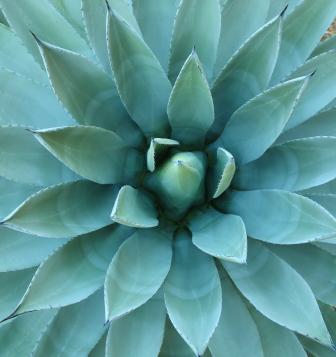
Blue agave side effects range from mild to moderate, depending upon the individual and his or her reaction to this natural sweetener. As agave syrup and blue agave nectar grow in popularity as sugar substitutes, more side effects may emerge.
Blue Agave Side Effects
Agave or blue agave is a succulent plant related to aloe that grows in the southwestern desert regions of the United States, Mexico and Central America. It's a very useful plant in an area in which few plants flourish and thrive. Big horn sheep graze on the leaves and native people use blue agave and other agave leaves for thread, needles, and writing implements. The sap or nectar collected from the plant creates sweet syrup. Many natural health proponents claim that agave syrup is a great low-glycemic sweetener. Others claim that agave is no more beneficial to health than table sugar, and fraudulent or adulterated agave products have compromised the quality and efficacy of many commercially available agave syrups.
Whether you believe agave provides health benefits or is a good substitute for high glycemic index sweeteners, knowing various potential blue agave side effects is important before using this natural sweetener.
Digestive Problems
The most commonly reported side effects of agave products are digestive complaints. Nausea, stomach cramps, and diarrhea afflict many people who overindulge in agave products. One of the original medicinal uses of this plant was as a constipation remedy, so it's no wonder it creates such side effects - too much agave syrup may have a laxative effect.
Raises Blood Glucose Levels
Many diabetics try agave or blue agave products after being told that it is a low glycemic index product, or a sweetener that won't raise their blood glucose levels the way that sugar or high fructose corn syrup does. Yet this statement may not be true. The Glycemic Research Institute conducted human clinical trials using agave syrup and discontinued the trials after the blood glucose levels of diabetics rose significantly after taking agave products, thereby demonstrating that it was not a low-glycemic index substance as previously thought. Dr. Joseph Mercola, M.D., a well-known physician who focuses on natural health, diet and environmental issues, points out that while sap directly from the agave plant is low glycemic, after processing agave is about 80 to 90 percent fructose and 10 percent glucose, a combination not found in nature. The closest product with similar ratios is high fructose corn syrup, a common sweetener used in everything from cola products to candy and implicated as a contributing factor to many disease including tooth decay, obesity, raised triglyceride levels and much more. So switching from high fructose corn syrup products to agave does not remove fructose from the diet.
The Problem with Agave Products
Many people continue to use agave products safely, and if used according to the label directions it may provide a pleasant sweetener. If you're trying to watch your blood sugar levels, however, you may be better off switching to another herbal sweetener such as stevia. People following a raw, living vegan diet often find agave called for in dessert recipes, but it's important to note too that even 'natural' agave products are typically processed around 140 degrees Fahrenheit, above the limit of 116 to 118 degrees most raw food diet followers believe kills living enzymes. Lastly, because of rising demand for agave products, manufacturers take short cuts and blend agave with other sweeteners, include the aforementioned high fructose corn syrup. Check labels carefully when purchasing agave products and buy only reputable brands.







